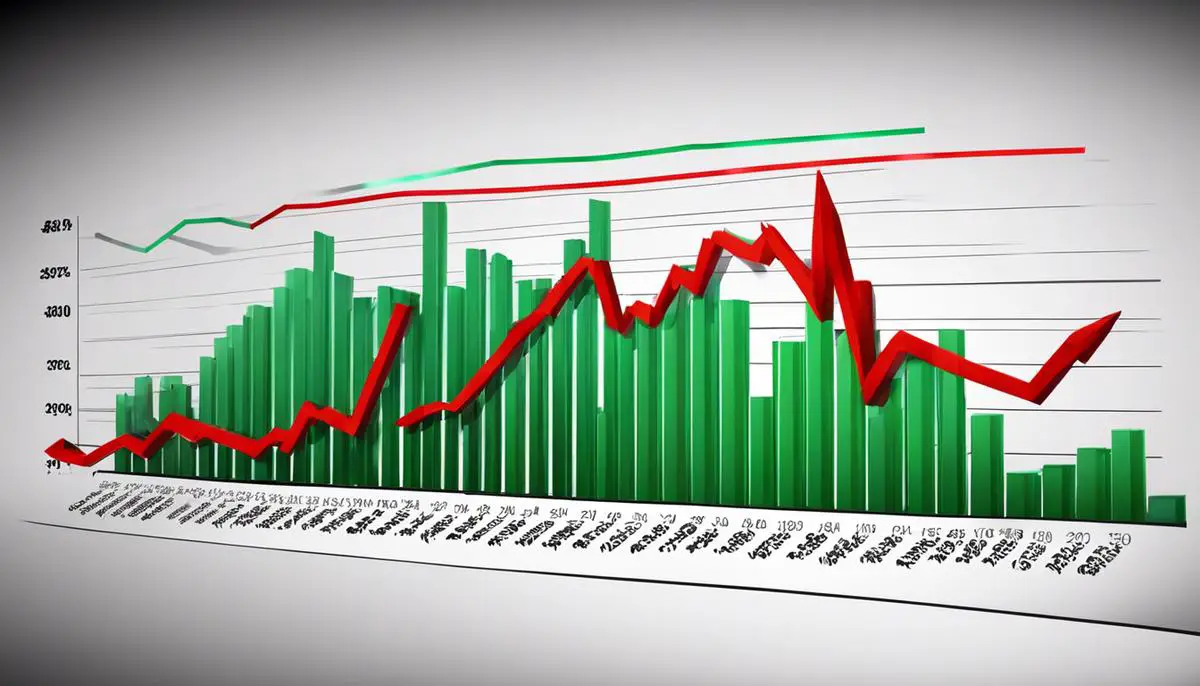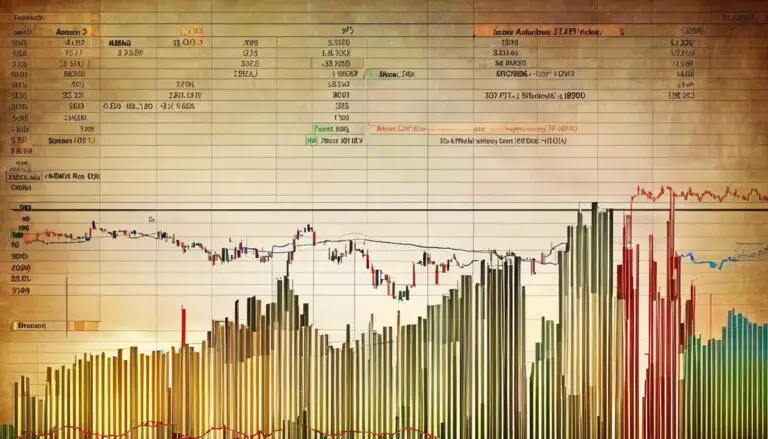Options trading can seem like a formidable frontier for many in the general public, yet with a little guidance, the principles of puts and calls can be demystified, opening up a world of investment strategies that can potentially safeguard assets while offering new avenues for growth. By unraveling the complexities of these financial instruments, we can grasp how call and put options function within the broader market ecosystem. This endeavor not only empowers investors with the flexibility to make more nuanced decisions but also equips them with the tools necessary for crafting a diversified portfolio that can weather the storms of market volatility and capitalize on its upswings.
Understanding Options Basics
Unlock the Potential of Stock Options: A Strategic Asset for the Ambitious Investor
In the dynamic world of finance, stock options stand as a powerful tool for investors and entrepreneurs alike, serving as both a strategic asset and a flexible investment. Understanding stock options is fundamental for any business-savvy individual planning to maximize their portfolio’s potential.
At its core, a stock option is a contract granting the holder the right, but not the obligation, to buy or sell a stock at a specified price – known as the strike price – within a set timeframe. The beauty of stock options lies in their versatility; they can cater to various strategies, from hedging risk to speculative ventures.
There are primarily two types of stock options: call options and put options. Call options empower investors to purchase stock at the strike price before the contract expires, capitalizing on bullish markets. Conversely, put options allow investors to sell shares at the set strike price, safeguarding their investments in bearish scenarios.
A stock option’s price, known as the premium, is influenced by several factors, including the stock’s current price relative to the strike price, the option’s time to expiration, and market volatility. This premium is the price paid for the flexibility and leverage stock options provide.
Leveraging stock options effectively demands an understanding of intrinsic value – the difference between the current stock price and the strike price – and time value, which diminishes as the expiration date draws near.
When wielded with finesse, stock options can enhance an investor’s portfolio through strategies such as covered calls for income generation or protective puts for downside protection. Additionally, options trading can offer significant leverage: controlling a larger amount of stock for a fraction of the price.
However, it’s crucial to acknowledge the risks associated with stock options. Their complexity requires a deep understanding of the market, and the leverage they offer can amplify both gains and losses.
For the entrepreneurial mind, stock options are not just a mere investment; they’re an opportunity for innovation within the financial portfolio. By filling a market need for strategic investment plans, stock options emerge as a cornerstone for the sophisticated investor aiming to stay ahead of the curve. Embrace the intricate dance of risk and reward, and stock options could very well be the pivot point in achieving financial aspirations.

Exploring Call Options
Capitalize on Upward Market Trends with Call Options
In the throes of a bullish market, seasoned entrepreneurs and savvy investors know an upward stock trend is more than a stroke of good luck—it’s an opportunity. Call options are the financial swords that, when wielded strategically, can slice through market noise, delivering profits that align with expectations of rising stock values.
A call option gives the holder the right—but not the obligation—to purchase a stock at a predetermined price, known as the strike price, within a specific time frame. The beauty? It offers the leverage to control a greater amount of stock with less capital upfront compared to purchasing the stock outright.
The profit potential in call options lies in the spread between the stock’s market price and the strike price when the market price exceeds the strike price. The investor’s prowess in timing and speculation comes into play here. Assuming a stock’s market price climbs well above the strike price before or at expiration, the option holder can exercise the option to buy the stock at the much lower strike price and sell it at the current market price, securing a profit equal to the spread minus the premium paid for the option.
A sharp investor may also capitalize on this appreciation without even exercising the option. As the stock price increases, so does the value of the call option. The investor can sell the option itself in the option market for a premium before expiration, pocketing the difference between the premium paid and the premium received.
Diligence in monitoring market trends, assessing the volatility of the underlying stock, and selecting the strike price and expiration date cannot be overstated. Align the execution of call options with corporate earnings announcements, product launches, or market-moving news that are likely to send stock prices soaring—this is where the well-informed prevail.
Reaping the rewards demands calculated risk-taking that comes with a thorough grasp of market dynamics and a pulse on global economic currents. Embrace the call option as a catalyst for growth; rise above the traditional stock purchase, and employ strategy in every move. After all, in the arena of investments, those who leverage knowledge and innovation stand to reap the most lucrative gains. Your arsenal is waiting.

Navigating Put Options
Investors aren’t just mere gamblers—they are strategists with an arsenal of tools at their fingertips, with one of the most potent being put options. When market turbulence hits and bearish trends loom, put options shine as a haven of hedging and profit-making potential.
The rationale behind using puts to weather or capitalize on falling prices rests on their very nature—they grant the holder the right, but not the obligation, to sell a stock at a predetermined price, known as the strike price, up until a specified expiration date. This characteristic morphs puts into an indispensable shield and a weapon for the financially astute.
Foremost, puts serve as insurance policies for a portfolio. An investor holding shares prone to depreciation can lock-in a sale price with puts, effectively setting a floor below which the investor’s losses will not tumble. This protective strategy, akin to an airbag in a high-speed race, mitigates risk, ensuring that portfolios are resilient against downturns.
For tacticians who scent blood in economic uncertainty, puts are more than just protection—they’re vehicles of profit in a downtrend. When equipped with the conviction that a stock will plummet, purchasing puts positions one to reap rewards from the decline. It’s not without reason that puts are sometimes dubbed as the bear market’s best friend.
But here lies the heart of the matter: Timing and astuteness play quintessential roles. The value of puts escalates as prices drop, but eyeing the opportune strike price and expiration while appraising the tempo of the downtrend is nothing short of crucial. The savvy investor must navigate through these decisions with precision, piloting through rough market waters with an almost clairvoyant foresight.
The beauty of puts lies in their flexibility—buy them outright for speculative ventures or pair them with stock holdings to construct a defensive bulwark. This malleability is what enables the seasoned player to tailor strategies that either brace for impact or dive head-first into the tempest, turning potential losses into lucrative gains.
Engaging in puts is not for the fainthearted nor the uninformed. It demands a nuanced grasp of market sentiments, stalwart risk management, and an agility to pivot when winds change course. These derivations may be complex, but they are potent instruments in the symphony of financial markets when conducted by the maestro— the informed, the innovative, and the indefatigable investor.

Having navigated the labyrinth of stock puts and calls, we emerge with a greater understanding of the sophisticated tactics investors can employ to protect and enhance their portfolios. The fluid dance of buying and selling options plays a critical role in the financial markets, providing not just a safety net for stock owners but also a launching pad for those looking to seize market opportunities. As individuals continue their journey in the world of investment, the knowledge of option strategies stands as a beacon that illuminates the path towards more informed and potentially rewarding investment choices.



